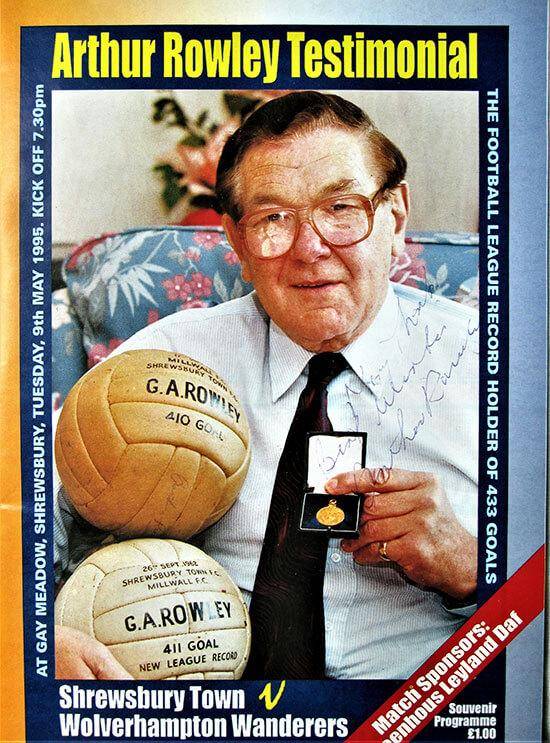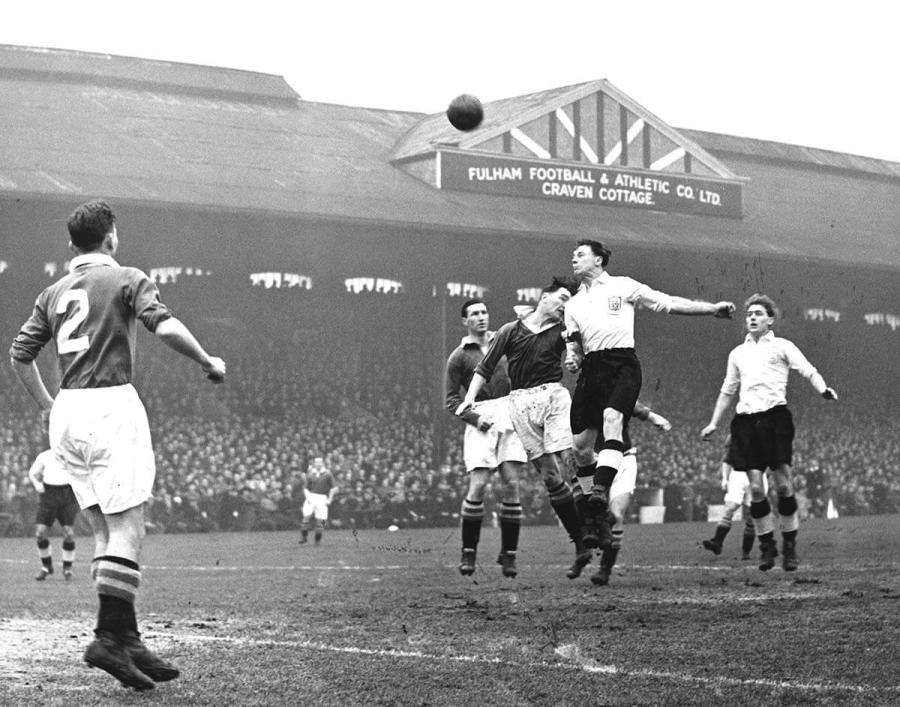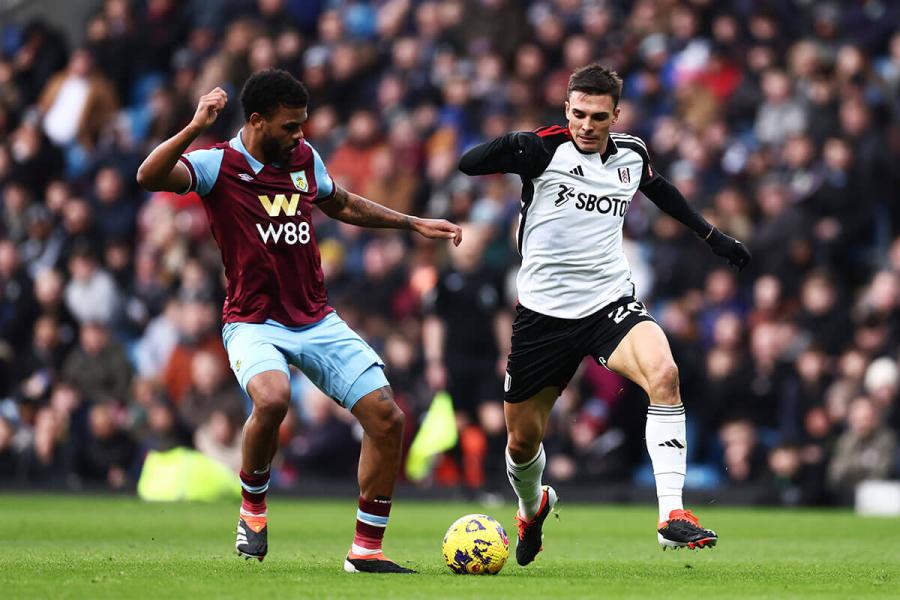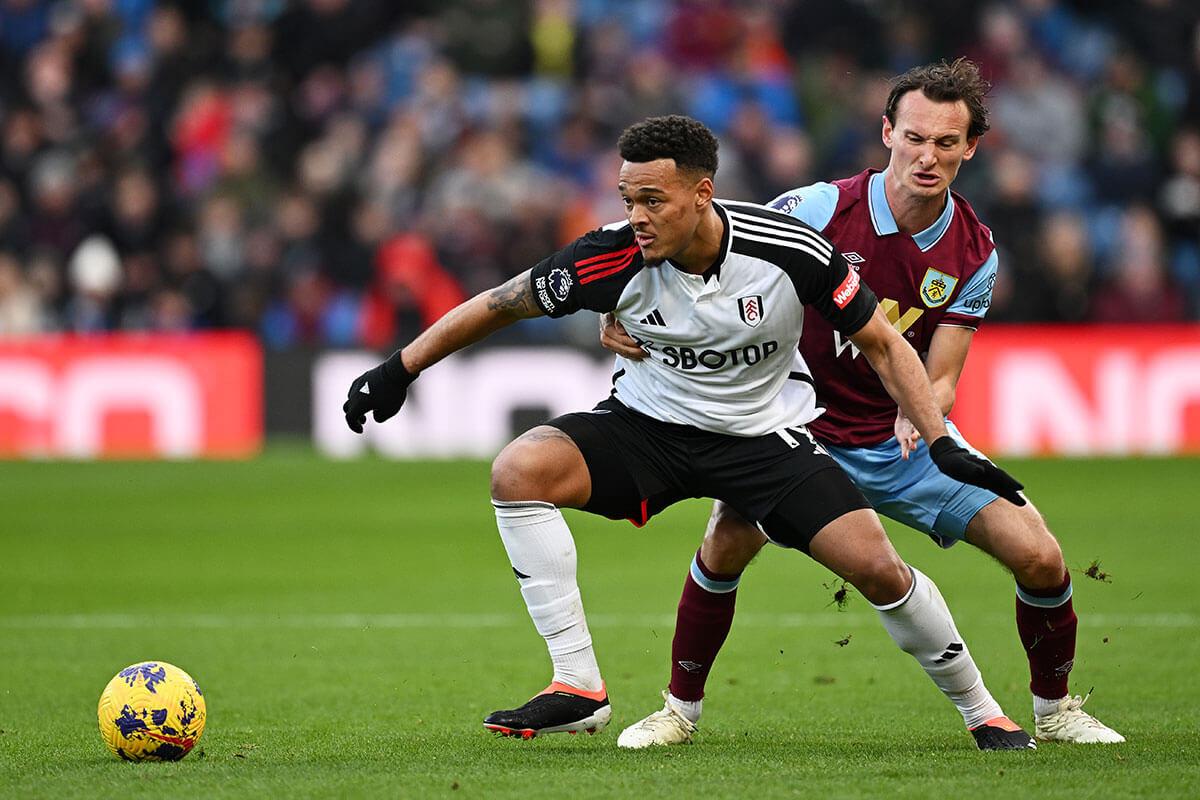Burnley 2-2 Fulham
With Fulham's season in danger of anti-climax it was refreshing to hear the unquenchable optimism of the club's regular commentators Jim and Jamie last Saturday.
In particular they were excited by the prospect of the team's first League victory at Burnley since 1951, and they wondered whether any supporters who saw that game are still active.
I was not at Turf Moor but I did attend a couple of important away fixtures in the 1950-51 season.
Seven decades ago
If the club really does date from 1879 (and I won't revisit that now), it took 70 years to reach the Football League's top tier, which was then boringly known as the First Division.
The forward line's combination of youth and experience contributed hugely to the team's success. Bob Thomas scored 23 goals in 40 games, with later arrival Arthur Rowley amassing 19 in 22 appearances.
The club's management gave all five forwards the chance to compete in the 1949/50's First Division fixtures but the going was tough.
Ten goals from Thomas that season made him top marksman again, but Rowley's disappointing tally led the club wrongly to doubt his potential and let him go to Leicester City, where he broke goalscoring records.
For the second season at the top, Fulham splashed the cash to introduce goalkeeper Ian Black, midfielders Archie Macaulay and Eddie Lowe and front man Bobby Brennan. All were selected for the opening match, away to Manchester United on Saturday 20 August 1950, and to my delight my father offered to take me there.

Old Trafford trip
By chance the players had caught the same Saturday morning train and I watched them in awe as they walked through our carriage on the way to the dining car. Most looked neither to their left nor their right but Len Quested gave me a knowing wink. Len was the Harrison Reed of his day with his spirited play and his rapport with supporters.
I vaguely recall the taxi ride to the ground, passing the Old Trafford cricket ground. With his usual caution, my father got us to our destination very early. This was anything but a hardship for I was thrilled to sit in this vast, open, almost empty arena (the roofing, damaged in wartime, had yet to be replaced).
It was not too long before the crowds appeared. In those days it was normal to applaud both teams as they came onto the pitch. so I was mystified by the outbreak of booing before a ball had been kicked. My father explained that this was directed at our new man Archie Macaulay, because of his connection with Arsenal. I don't recall anything of the game, which Fulham lost by a single goal.

West London rivals
On a much shorter excursion to Stamford Bridge in December I saw the Blues win 2-0 despite having Jimmy Bowie sent off, and Chelsea being stuck in the relegation zone. In the closing weeks of that season they needed to win the last four matches to survive.
Three of those games were at the Bridge starting with a 1-0 victory over Liverpool on 21 April. That coincided with Fulham's last away match of the season, a visit to Burnley which gave us one final chance to do the double over an opponent.
The first half at Turf Moor saw keeper Ian Black defy the Burnley forwards but after the interval it was a different story. Jimmy Bowie (the one sent off at the Bridge) was now playing for Fulham and had formed an effective partnership with right-winger Arthur Stevens.
The latter's elegant pass set up Bob Thomas to open the scoring. Ten minutes from time, Thomas notched the second after a fifty-yard dash by Beddy Jezzard. Doubtless I cheered when I heard the result on BBC Sports Report at 5pm that day without realising how rare that victory would be.
Having beaten Wolves in midweek Chelsea travelled to the Cottage on the 28 April and they were shocked when Jezzard headed the Whites into the lead. Inspired by Roy Bentley, the Blues fought back and an hour into the match they had a 2-1 advantage, at which point the Fulham players seemed to lose all interest.
Maybe they were distracted by thoughts of a North American tour just days away. They closed their ears to the crowd's sarcastic rendition of 'Dear Old Pals' and watched Chelsea walk off with the points. The Blues subsequently escaped relegation on goal average, which was the metric used at the time.
Bernd Leno blunder
Seventy-three years later Fulham had the upper hand at Burnley. Andreas Perreira's corner was converted by an unmarked Joao Palhinha and in the 21st minute Rodrigo Muniz lobbed the keeper, finally scoring the goal that had eluded him all season.
Fulham coasting? Never a great idea, least of all when there is an ex-Chelsea man waiting to get involved.
Forty-three minutes after Muniz's goal, Burnley manager Vincent Kompany sent on David Datro Fofana. A rare blunder by Bernd Leno allowed Fofana a free header and in added time the same attacker bundled Wilson Odobert's cross over the line to rob Fulham of a historic victory.
The Sunday Times headlined the report: 'Fofana double gives Burnley a glimmer of hope'.
After what happened in April 1951 anything is possible.

The views expressed in this blog are those of the author and unless specifically stated are not necessarily those of Hammersmith & Fulham Council.

